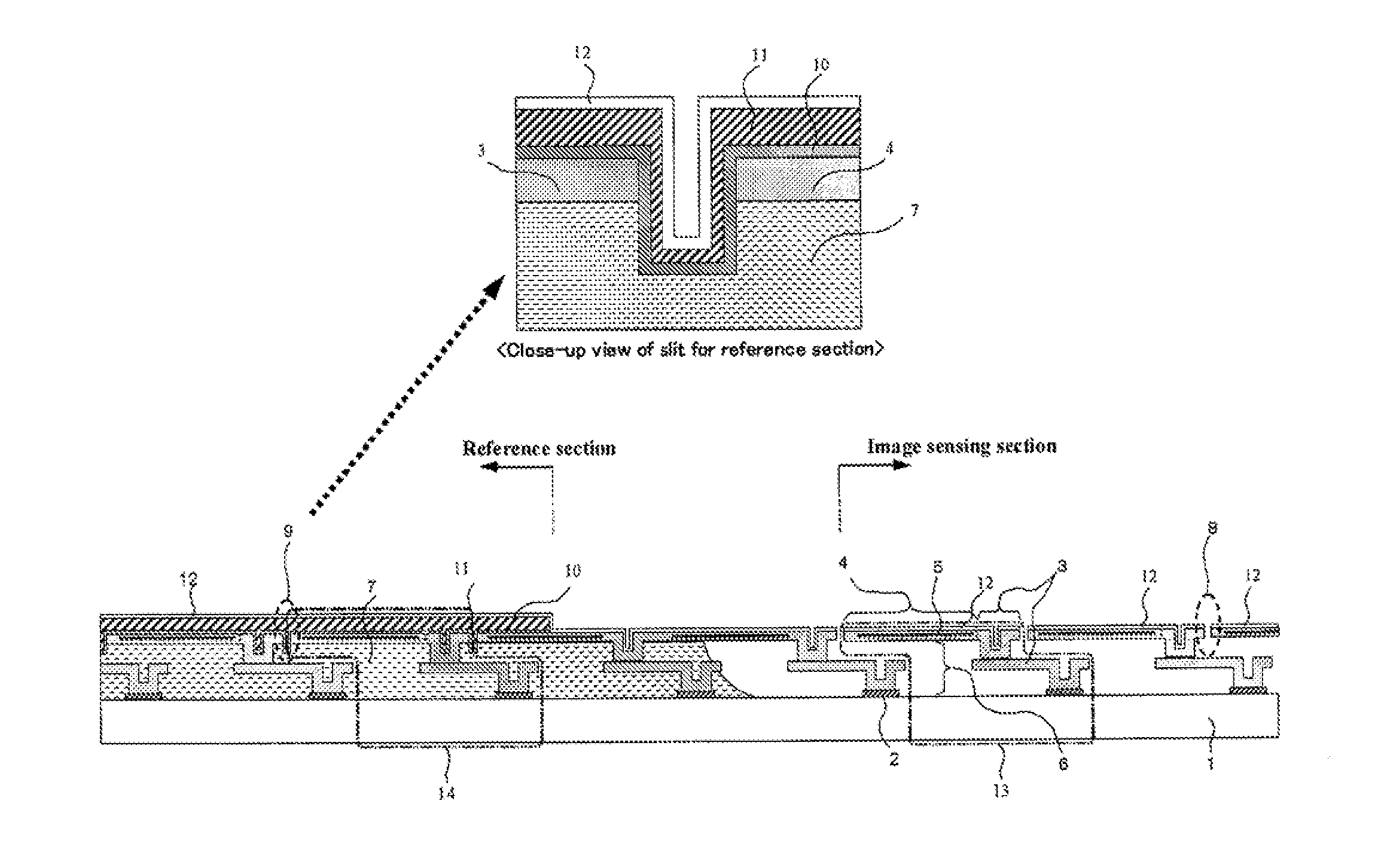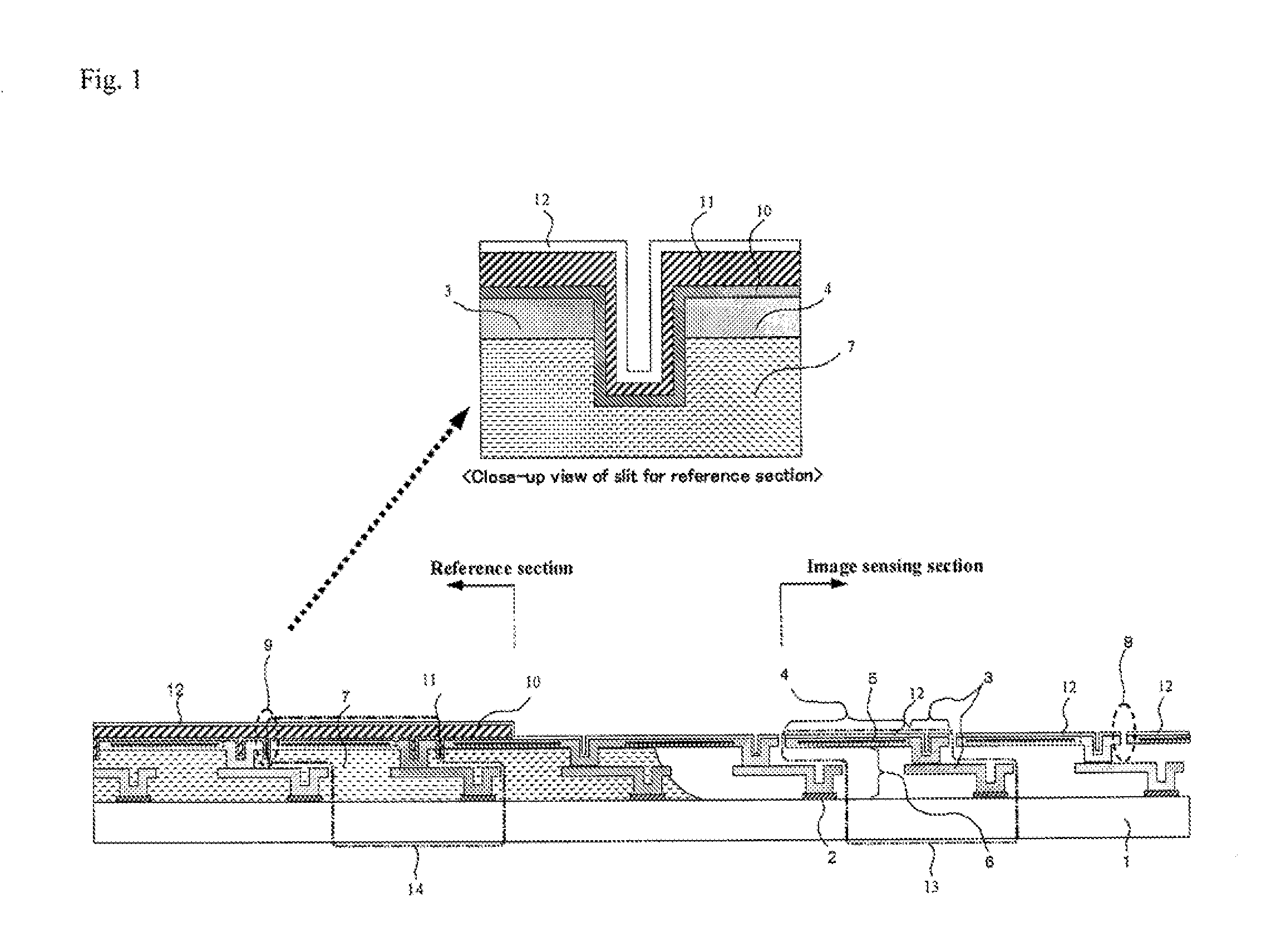Thermal-type infrared solid-state image sensing device and method of manufacturing the same
a solid-state image and sensing device technology, applied in the direction of optical radiation measurement, instruments, material analysis, etc., can solve the problems of inability to accurately detect the temperature of an object, complicated device structure, and high cost of the device, so as to improve improve the heat transfer effect of discharging heat with good efficiency, and increase the residual stress reduction
- Summary
- Abstract
- Description
- Claims
- Application Information
AI Technical Summary
Benefits of technology
Problems solved by technology
Method used
Image
Examples
first exemplary embodiment
[0149]Experimentally produced was a thermal-type infrared solid-state image sensing device which has effective 640×480 light receiving pixels in an image sensing section and is provided with a couple of reference sections having reference pixels in eight rows, which are respectively positioned above and below the image sensing section in its vertical direction. The slit widths of the image sensing section slit and the reference section slit are 0.5 μm. The film thickness of the surface layer of the light blocking Ti film was set to 50 nm, the film thickness of the surface layer of the light blocking Al film was set to 250 nm, and the film thickness of the surface layer of the SiN film for protecting the film made of light blocking electrically conductive material or the sacrifice layer was set to 50 nm. The film thickness of the surface layer of the above-described light blocking Ti film, light blocking Al film and protective SiN film with respect to the slit width of the reference ...
PUM
 Login to View More
Login to View More Abstract
Description
Claims
Application Information
 Login to View More
Login to View More - R&D
- Intellectual Property
- Life Sciences
- Materials
- Tech Scout
- Unparalleled Data Quality
- Higher Quality Content
- 60% Fewer Hallucinations
Browse by: Latest US Patents, China's latest patents, Technical Efficacy Thesaurus, Application Domain, Technology Topic, Popular Technical Reports.
© 2025 PatSnap. All rights reserved.Legal|Privacy policy|Modern Slavery Act Transparency Statement|Sitemap|About US| Contact US: help@patsnap.com



